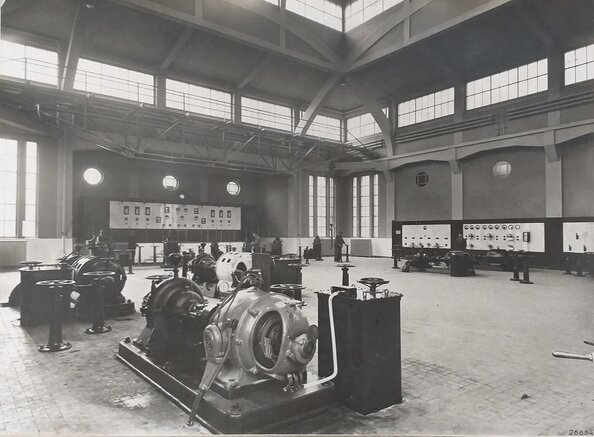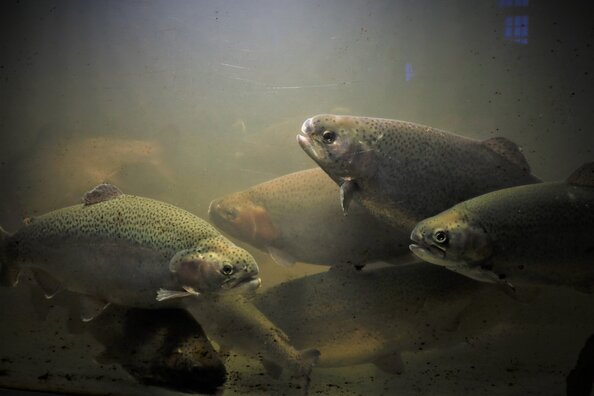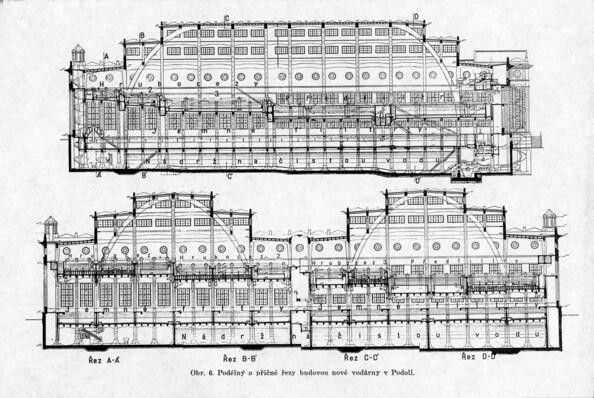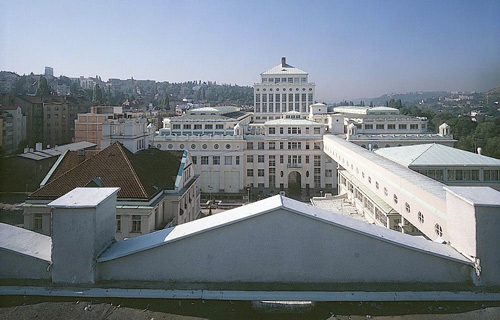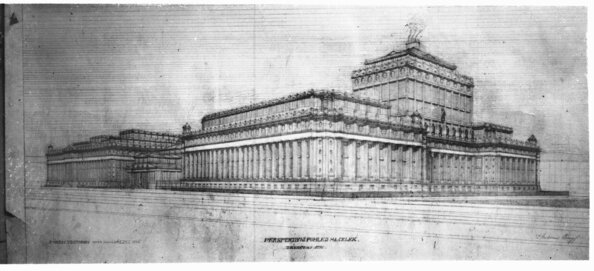
Originally, one of the largest buildings in the waterworks complex was home to enormous engines with long shafts that were used to power giant pumps. These drove water up into the treatment tanks, so that the rest of the treatment process could operate by gravity alone. Today, the pumps are so much smaller that they’re hidden right within the pipework.
Nowadays, the engine room is empty, apart from some aquariums with “signal” fish, which are used to monitor the quality of raw (untreated) water from the Vltava River. These rainbow trout are kept in the same Vltava water that is used for drinking water production. If any toxic substance got into the water – which so far has never happened – the trout would “signal” it by their reaction. The Vltava River is too warm for them, though, so fresh bags of ice are regularly placed in the aquariums to create a comfortable environment for them.
The Podolí Waterworks has existed in its present form since 1966, and in principle the water treatment process remains the same – we screen the water, clarify it, filter it and disinfect it. However there have been many advances in the technology since the 1920s. The waterworks has always kept up with the times and is constantly being modernised – the first changes were actually made just two years after it opened. From the very beginning, the plan was to allow for the technology to be expanded and modified based on future developments. In 1929 the waterworks was only half of what we see today, along with a pumping station and accommodation for workers.
Over time, of course, the spreading city’s need for water grew, and the capacity of the waterworks was also steadily increased. This was achieved either by installing new technology or by expanding, refurbishing and modernising the existing equipment. A major technology shift took place in the 1950s, when the southern building of the waterworks complex was completed, adding a chemical pre-treatment process.
This means that the waterworks complex we see today wasn’t built all at once, but is the product of two stages of development, in the 1920s and 1950s. But although the original project had to be redesigned, and the southern building with the tower is actually 30 years younger, its architect Antonín Engel maintained a unified architectural style, and today the waterworks feels like an indivisible unit.
... water and wastewater treatment require a huge amount of electricity, typically accounting for 25-40% of water treatment costs? In the water treatment process, the biggest energy consumers are the pumps.
If you’d like to learn more, continue to the other parts of the treatment plant...
